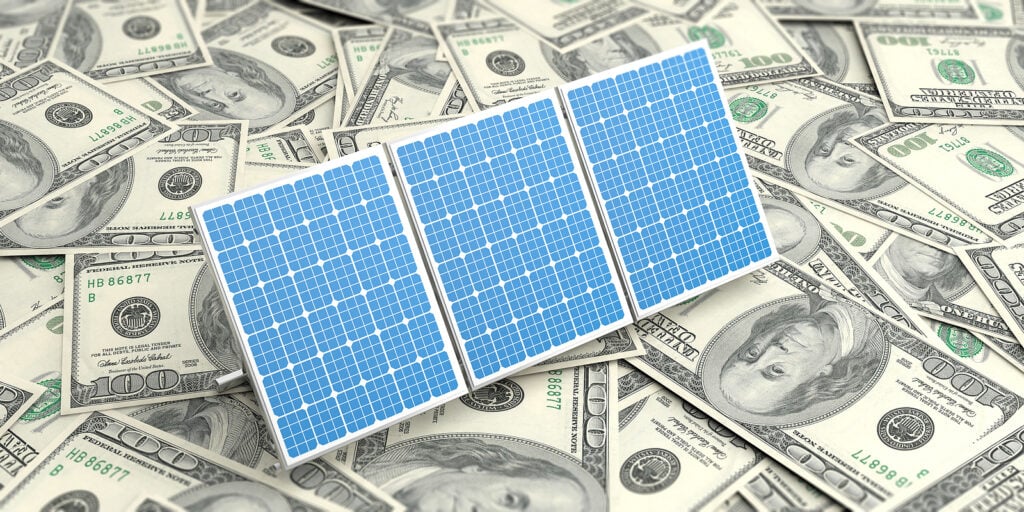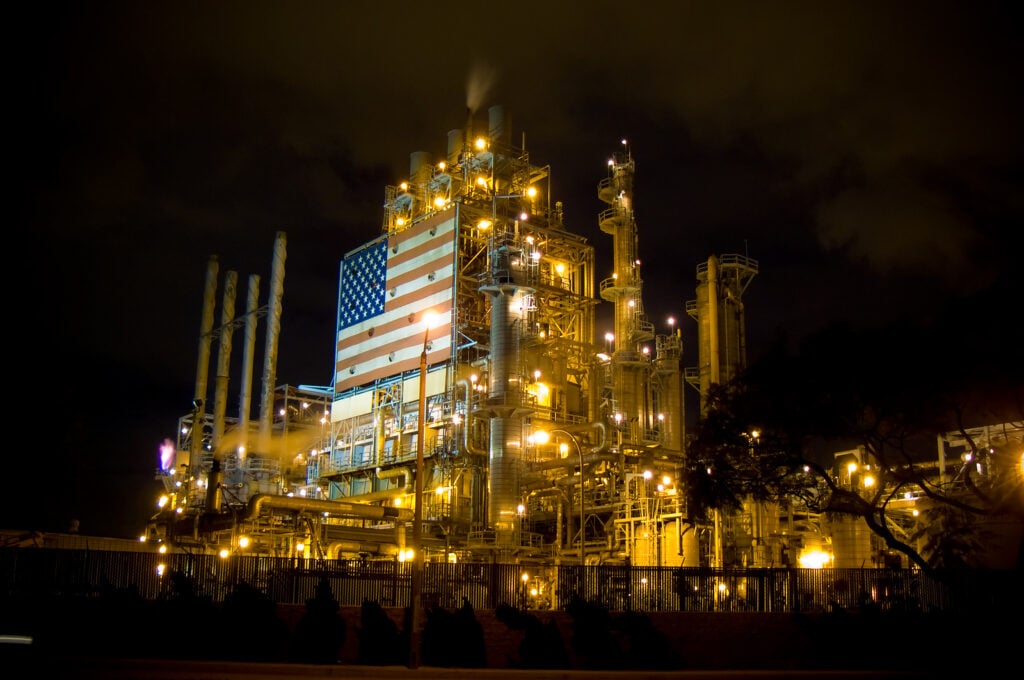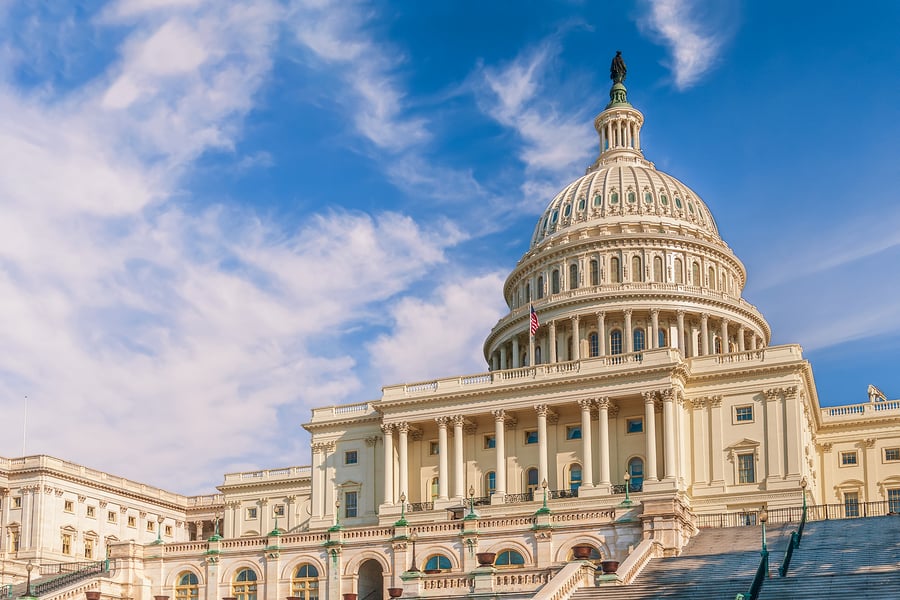Biden Helps China Again, Exempting Bifacial Solar Panels From Tariffs
According to The New York Times, President Biden is imposing a tariff of between 14 percent and 15 percent for the next four years on imported crystalline silicon solar products, but his administration at the same time doubled the amount of solar cells that can come into the country without facing tariffs to 5 gigawatts and exempted bifacial solar panels from the levies “to help ensure that solar deployment in the United States continues at the pace and scale needed to meet the president’s clean energy targets.” Biden’s administration also plans to begin talks with Canada and Mexico to allow them to export their products to the United States duty-free.
Utility-scale bifacial solar panels are the most important for President Biden’s climate agenda because they are the most efficient and used in large utility-scale solar energy projects. Bifacial solar modules produce power from both sides of the panel—up to 30 percent more than traditional monofacial panels. China dominates all stages of the solar supply chain, producing between 60 and 80 percent of the world’s polysilicon, wafers, crystalline silicon cells and solar modules. And, China’s solar industry is reliant on polysilicon sourced from Xinjiang, where the Chinese government has mass detentions of minority groups such as the Muslim Uyghurs. Xinjiang makes about 45 percent of the world’s polysilicon.
Biden’s Pledge and U.S. Solar Manufacturing Capability
President Biden pledged to cut U.S. greenhouse gas emissions 50 to 52 percent below 2005 levels by the end of this decade and to have 100 percent of electricity generated from carbon-free sources such as renewable energy and nuclear power by 2035. While these goals are not binding on the United States since Biden’s Paris Climate Commitment is not a treaty ratified by the Senate, Biden’s goals are based on his executive actions. His administration is counting on solar to play a significant role in reducing emissions from electricity production. According to an Energy Department report, solar energy could provide 40 percent of the nation’s electricity by 2035, but now supplies less than 4 percent. To achieve the needed growth, the nation would have to double the amount of solar energy being installed every year over the next four years and then double it again by 2030. A study by the University of California, Berkeley showed that achieving even a 90 percent emissions-free grid by 2035 would mean 25 percent of power would need to be generated by solar—an increase of 70 gigawatts each year.
Last year, the U.S. solar market grew to about 20 gigawatts from 11 gigawatts four years ago. U.S. solar manufacturing capacity, however, was four gigawatts last year, which satisfies just one-fifth of the country’s installations and no bifacial solar manufacturing capability. Some new manufacturing plants opened since tariffs were imposed (Jinko Solar’s facility in Florida, LG Electronics’ in Alabama and Hanwha Q CELLS USA’s in Georgia) and some existing companies (e.g. First Solar) expanded operations. Still, American solar manufacturers have not been able to compete with low-cost products from China.
Solar Tariffs
To spur the domestic solar manufacturing industry, solar tariffs were imposed in February 2018 by President Donald J. Trump, who followed a recommendation of the International Trade Commission, an independent panel that reviews trade cases. The tariffs started at 30 percent and were set to decline by 5 percentage points each year over the course of four years. The first 2.5 gigawatts worth of solar cell and module imports were exempt from the tariffs. The tariffs would have expired this month, but several manufacturers, including Auxin Solar, Suniva, Hanwha, LG and Mission Solar Energy, petitioned to extend the levies, indicating they were still needed. In 2020, the United States imported 21.1 gigawatts worth of solar products with 88 percent of them subject to the tariffs. In 2022, the fourth year of the tariffs, the rate was set at 15 percent.
A Biden administration ban imposed last year on solar products made with material from one Chinese company accused of using forced labor in Xinjiang brought tens of billions of dollars of U.S. solar installations to a halt. U.S. Customs and Border Protection banned imports of silica-based products made by Hoshine Silicon Industry Company as well as goods made using those products because Hoshine uses forced labor to produce its silica-based products.
A new law that strengthens the prohibitions on importing goods from Xinjiang is expected to cast that net even wider. A bill aimed at banning products made with forced labor in China became law after President Biden signed it on December 23. Over the next four months, the Biden administration will convene hearings to investigate how pervasive forced labor is and what to do about it. The Uyghur Forced Labor Prevention Act shifts the burden of proof to companies from customs officials. Firms will have to prove that their factories, and those of all their suppliers, do not use slave labor or coercion.
Conclusion
Much of the world’s supply of solar panels come from China, which creates a quandary for the Biden administration that has described China as America’s foremost geopolitical and economic competitor. China has pumped vast amounts of government funding into renewable energy industries, making them the number one supplier of solar panels and their components. But, China uses slave labor to produce polysilicon—a primary component of solar panels. For the United States to meet Biden’s target of 100 percent carbon-free electricity by 2035, which may not even be feasible, it would need to construct a vast number of solar facilities each year. The domestic U.S. solar manufacturing industry is not equipped to handle the massive number of solar panels needed. That means that the United States is dependent upon China’s solar manufacturing capability to meet Biden’s energy goals. A new law that Biden signed in December, however, may put a damper on his carbon-free ambitions. Biden’s carbon-free goals and China’s dominance in solar panel manufacturing may clash with Biden’s promise and signed legislation to defend human rights.
*This article was adapted from content originally published by the Institute for Energy Research.




